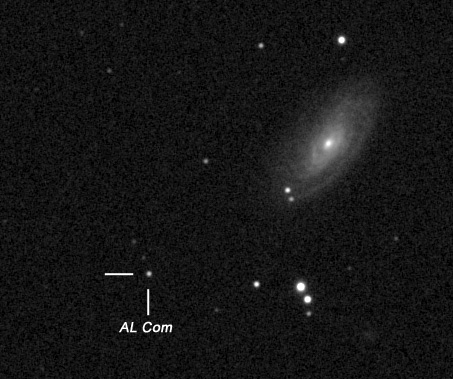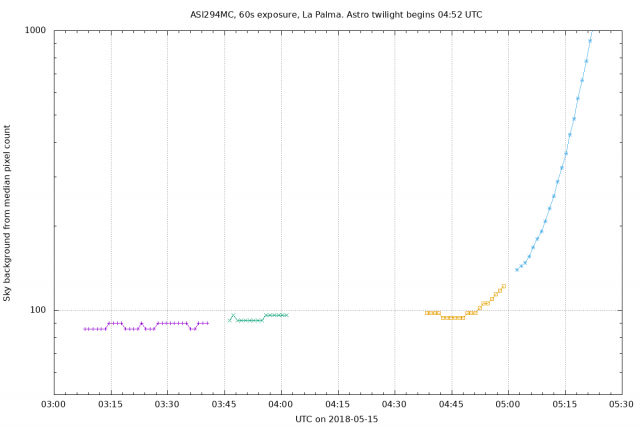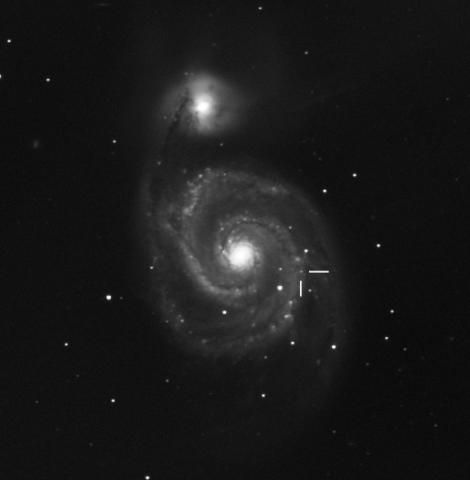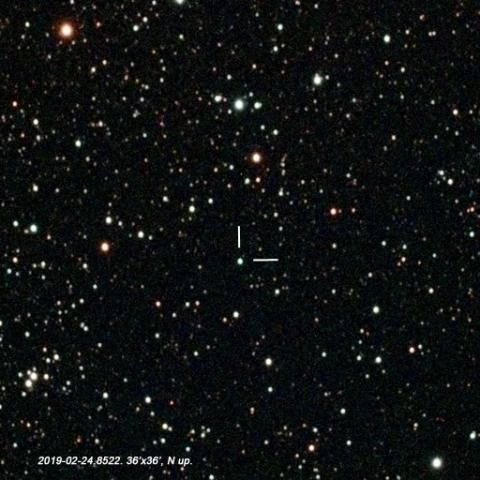Forum Replies Created
-
AuthorPosts
-
 Nick JamesParticipant
Nick JamesParticipantI hope to have video. I’ll let you know after the event.
 Nick JamesParticipant
Nick JamesParticipantThat’s a really interesting report. Prentice and Alcock would be amazed at so many high quality meteoroid orbits in such a short time.
 Nick JamesParticipant
Nick JamesParticipantI get 14.11 G tonight using a 90mm refractor from Chelmsford and the green pixels from an RGB detector. There are lots of galaxies in the field although the conditions here are very hazy.

 Nick JamesParticipant
Nick JamesParticipantBizarre indeed. I wonder how many TLPs it inserts?
15 April 2019 at 8:20 am in reply to: Very bright fireball on Saturday morning, March 30, at 03:52 GMT #580975 Nick JamesParticipant
Nick JamesParticipantIt was a sporadic.
 Nick JamesParticipant2 April 2019 at 8:16 pm in reply to: Does it get darker after the end of Astronomical twilight? #580925
Nick JamesParticipant2 April 2019 at 8:16 pm in reply to: Does it get darker after the end of Astronomical twilight? #580925 Nick JamesParticipant
Nick JamesParticipantI very much doubt if you could detect any natural scattered sunlight in the sky after the end of astro twilight from anywhere in southern England. I’m not sure how stable the SQM photometer is but I imagine you are detecting man-made scattered light. You would need to have a very good sky for natural sources such as airglow to have a detectable effect.
I attach a plot from “Sunsets, twilights and evening skies” by Aden and Meinel. This is a lovely book and has several chapters on twilight. Also, a plot from an imaging session on La Palma where the skies are really dark and, in this case, very transparent . This shows the median sky background for several imaging sessions of objects at different altitudes. Astro twilight begins at 04:52 and it is only just detectable even from a place with very dark skies.
It’s all a bit academic for me in Chelmsford. On very good nights I can only just detect the sun in my skies when it is between 15-16 deg below the horizon!

 Nick JamesParticipant
Nick JamesParticipantThis is an interesting read.
 Nick JamesParticipant
Nick JamesParticipantThere is also a bright nova in M31 at the moment discovered by Hornoch and Zhang. It was fainter than mag 18 at discovery but I measured AT2019bsd as 15.1 unfiltered (ref UCAC-4 R) last night. It is sitting on TNS with no spectral confirmation.
19 March 2019 at 7:03 am in reply to: Planisphere for demonstrating precession of the equinoxes #580875 Nick JamesParticipant
Nick JamesParticipantHave fun with the images. That software routine would be very useful when polar aligning. I did this for my mount by imaging the pole undriven and then imaging the pole while slewing in RA. I needed to find the centre of the arcs and ended up printing the images and using a compass so something that did this automatically would be very helpful!
18 March 2019 at 10:24 pm in reply to: Planisphere for demonstrating precession of the equinoxes #580872 Nick JamesParticipant
Nick JamesParticipantIf anyone wants to have a play I attach a couple of undriven images of the pole. One was taken when I was polar aligning my mount in Jan 2018, the other was taken tonight. They are both 600s exposures with the same camera/telescope and the FoV is 36×24 arcmin. The original FITS files are here.
 Nick JamesParticipant
Nick JamesParticipantHere’s an image of the transient taken tonight in a very bright sky with the Moon very nearby. I need to re-do my flats!

 Nick JamesParticipant
Nick JamesParticipantMattias Malmer built a nice 3D model of 67P from Rosetta Navcam images which you can find here. It is still fairly low res and a much higher metre level model from DLR/MiARD is available from here along with a suitable viewer. If you have a suitable 3D printer you can print your own model of the nucleus.
 Nick JamesParticipant
Nick JamesParticipantNo, it’s not constant! More correctly it should be called the Hubble parameter and it evolves with time but the odd thin is that we have two discordant measurements at the current epoch.
These are two very accurate measurements made in two different ways that don’t agree at a significant statistical level. Planck gives 67.7 km/s/Mpc from observations of the Cosmic Microwave Background and Gaia/HST gives 73.5 km/s/Mpc from more direct observations of Supernova redshifts. The two are very different measurements. I think the Planck measurement assumes a particular cosmological model and fits a power spectrum to the variations in the CMB and then infers H from that. The Gaia/HST measurements use a conventional redshift v distance approach but, with Gaia’s parallax measurements and HST’s Cepheid measurements, we now have a much better distance ladder to the distant SNe.
All interesting stuff. Cosmologists and astronomers will never be out of a job.
 Nick JamesParticipant
Nick JamesParticipantOne standard London bus is 0.05517776187067525650202815557146 furlongs long to within the accuracy of my calculator so this must be true.
 Nick JamesParticipant
Nick JamesParticipantOK Steve, you are going to have to explain how you measured the speed of light using a microwave oven and some chocolate. I’m guessing it is a rather circular argument involving standing waves and melted chocolate. What would Michelson and Morley make of it?
 Nick JamesParticipant
Nick JamesParticipantHere’s an image of it from last night. I get it to be 10.68 (using Gaia G and the green plane of this colour image)

 Nick JamesParticipant
Nick JamesParticipantIndeed. The speed of light is defined to be exactly 299,792,458 m/s but how much more fun it is to quote it in obscure units. I think it is around 1803 giga-furlongs/fortnight. At least a furlong is well defined (1/8 mile or approx 201m). The problem with NTUs is that they are so vague. How tall is a giraffe and what is the volume of a swimming pool? In most cases I don’t really think they help to visualise the object being described.
 Nick JamesParticipant
Nick JamesParticipantThat’s the length of 8 London buses…
 Nick JamesParticipant
Nick JamesParticipant -
AuthorPosts
